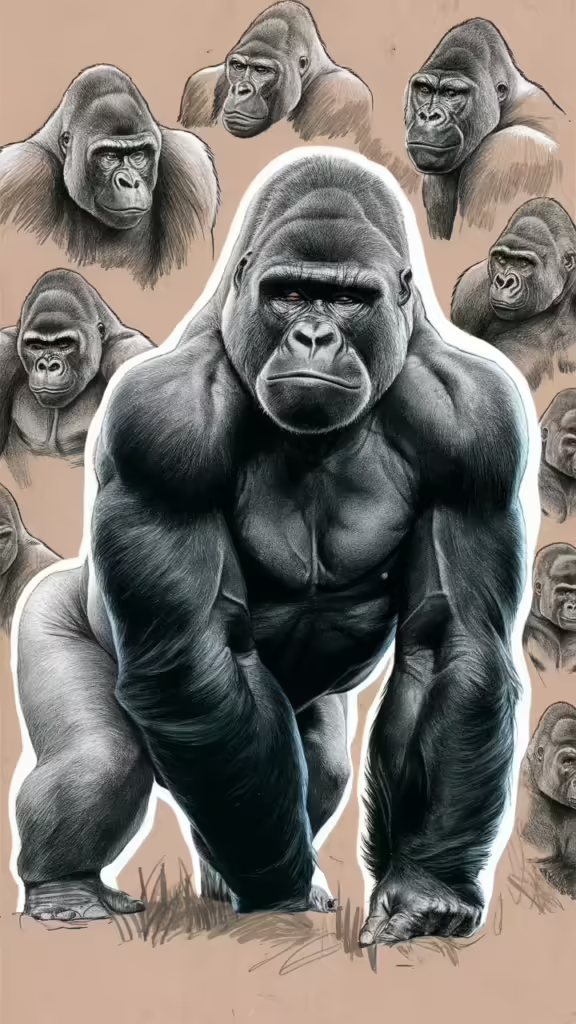
Gorilla drawings often capture the raw power and gentle nature of these magnificent creatures. Sketched lines bring out the deep-set eyes and expressive faces that make gorillas so captivating.
Artists use various techniques to highlight the muscular build and textured fur of gorillas in their sketches. These drawings can range from detailed, realistic portrayals to more abstract interpretations.
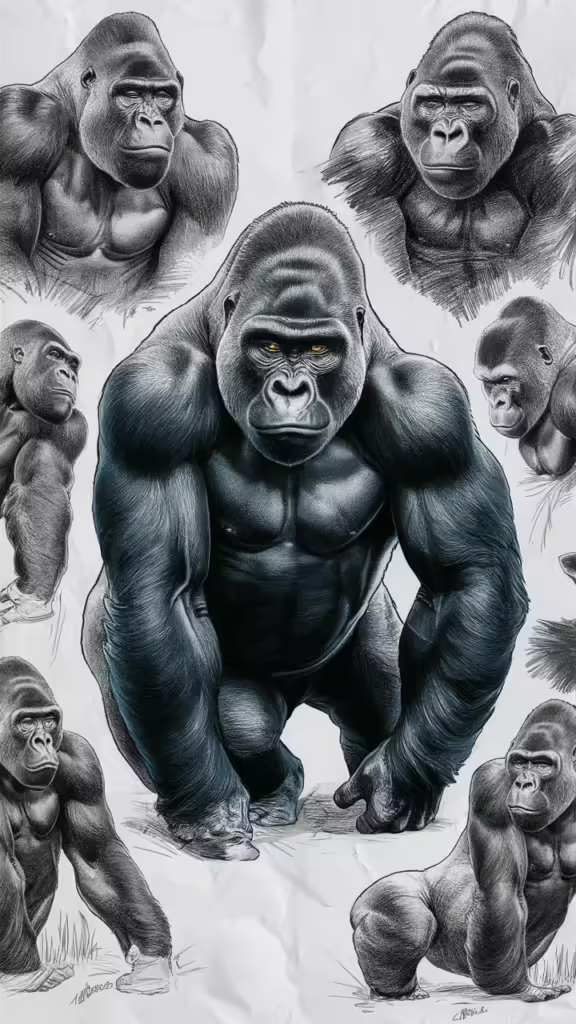
To create a lifelike gorilla sketch, artists need to study the anatomy and proportions of these great apes. Attention to detail in the gorilla’s hands and feet can add a sense of realism to the drawing.
Using shading and cross-hatching techniques, artists can add depth and dimension to their gorilla sketches. This helps to emphasize the three-dimensional form of the gorilla’s body.
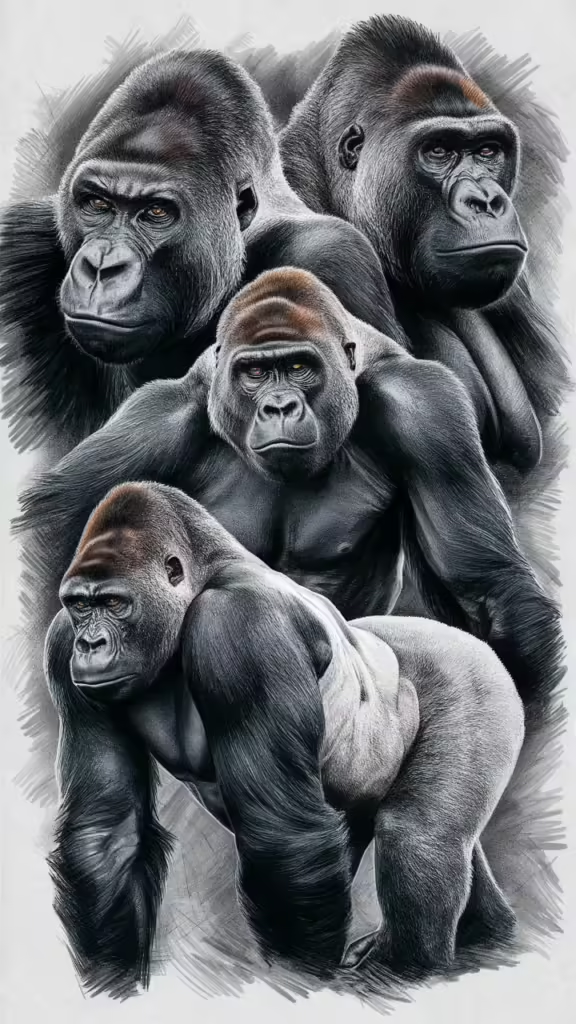
Many artists start their gorilla sketches with basic shapes to outline the body structure. This foundational step ensures accurate proportions before adding intricate details.
Capturing the unique facial expressions of gorillas is essential for conveying their personality. Subtle changes in the eyes and mouth can transform a sketch from lifeless to full of character.
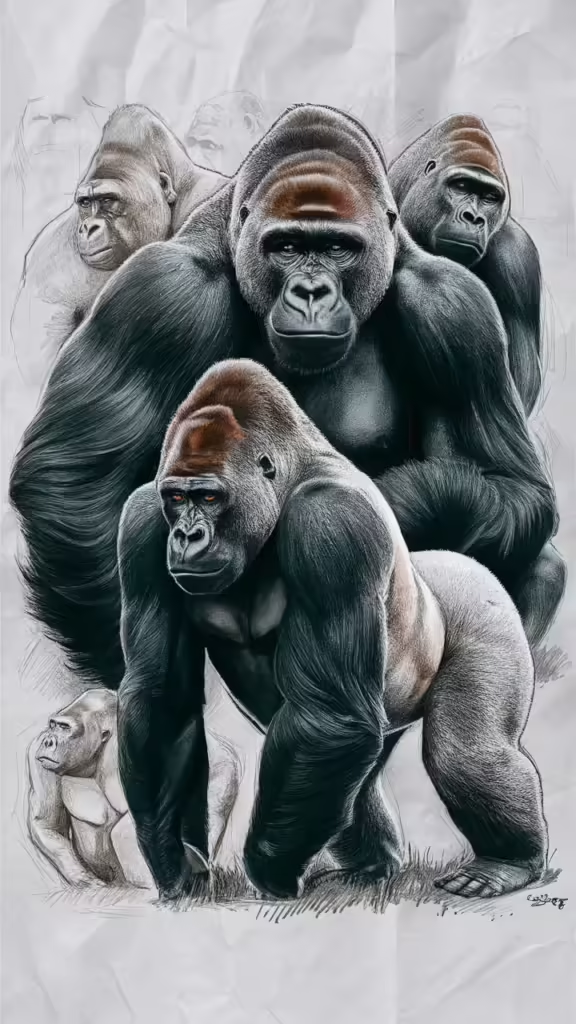
Incorporating foliage and natural elements into a gorilla sketch can provide context and enhance the composition. This not only adds interest but also situates the gorilla in its natural habitat.
Artists often experiment with different mediums, such as charcoal or graphite, to achieve various textures in their sketches. Each medium offers a unique way to depict the gorilla’s fur and skin.

When sketching gorillas, it’s important to consider their social behavior and interactions. Including multiple gorillas in a drawing can illustrate their family bonds and group dynamics.
Attention to the gorilla’s posture and stance can convey a lot about its mood and behavior. A relaxed, sitting gorilla gives a different impression than one that is standing or moving.
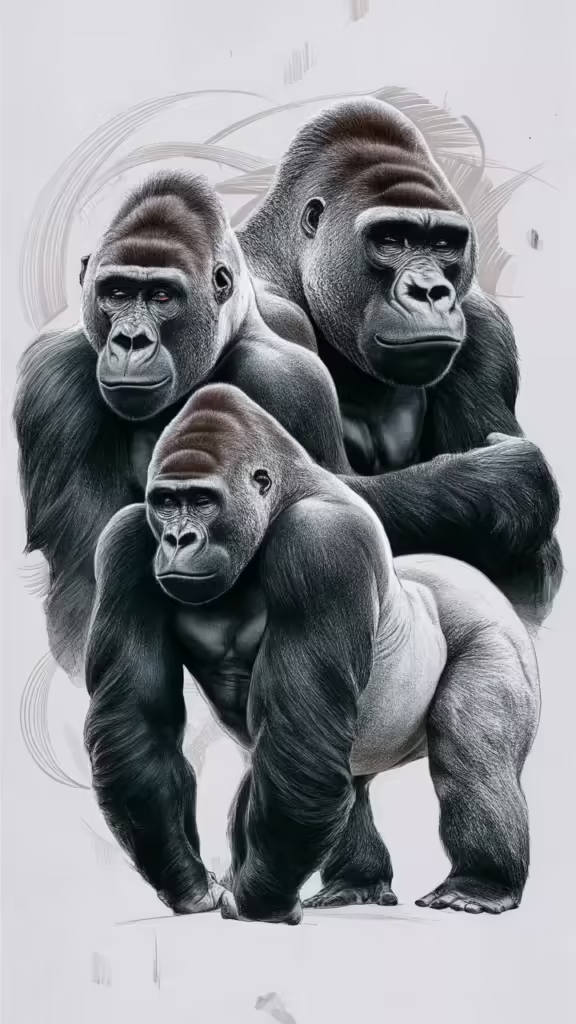
Artists can use reference photos to capture the small details that make each gorilla unique. These references help in rendering accurate features, from the wrinkles on their faces to the contours of their muscles.
Gorilla sketches can be both educational and artistic, providing insight into the anatomy and behavior of these animals. They can serve as a powerful tool for raising awareness about gorilla conservation.
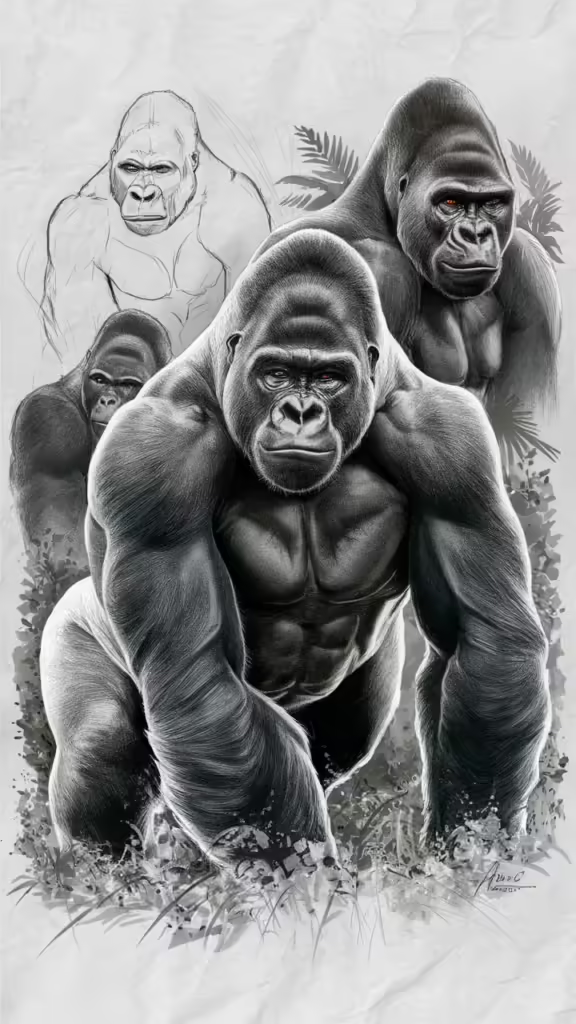
The use of negative space in a gorilla sketch can draw attention to the main subject and create a striking composition. This technique allows the viewer’s eye to focus on the gorilla without distraction.
Combining line work with areas of solid shading can create a dynamic and visually appealing sketch. This contrast helps to highlight the gorilla’s form and features.
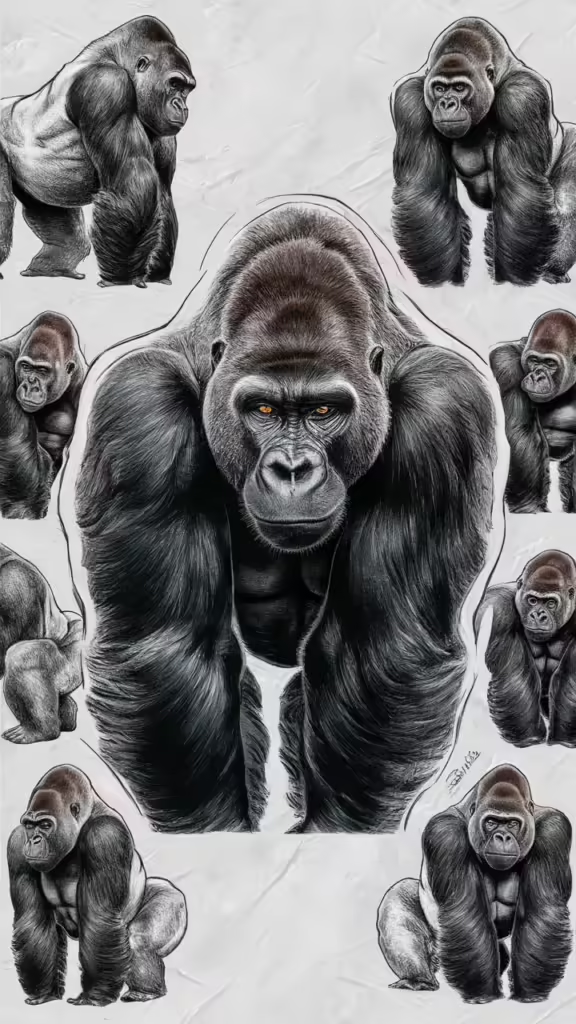
Some artists prefer to sketch gorillas in motion to capture their dynamic energy. Action poses, such as a gorilla climbing or running, can add a sense of excitement to the drawing.
Details like the texture of the gorilla’s fur and the glint in its eyes can bring a sketch to life. These elements make the drawing more engaging and realistic.
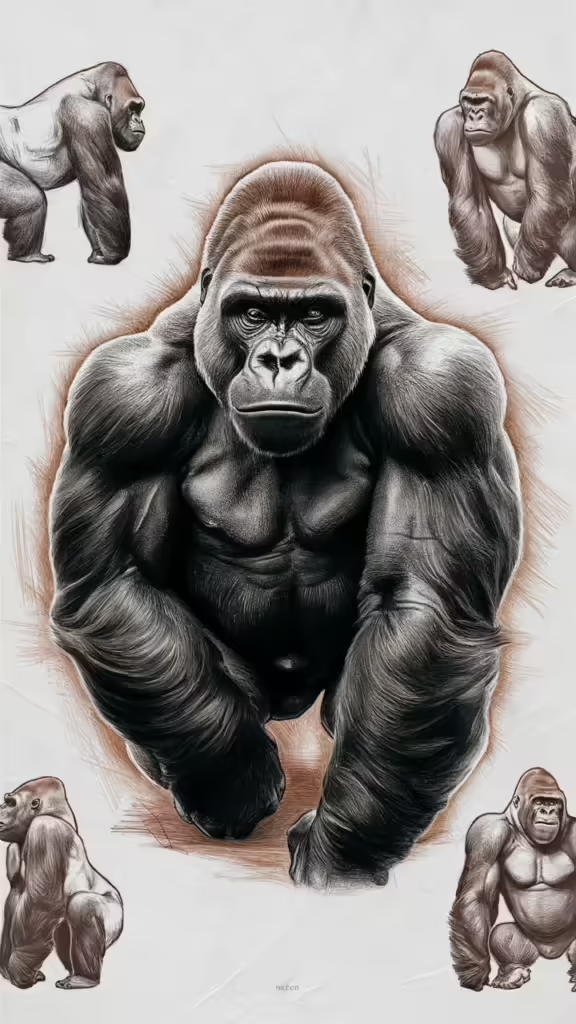
Simplified, stylized gorilla sketches can be just as impactful as detailed ones. By focusing on the essence of the gorilla’s shape and form, artists can create powerful images with minimal lines.
Using bold, confident strokes can convey the strength and majesty of gorillas. This approach can result in a dramatic and compelling sketch.
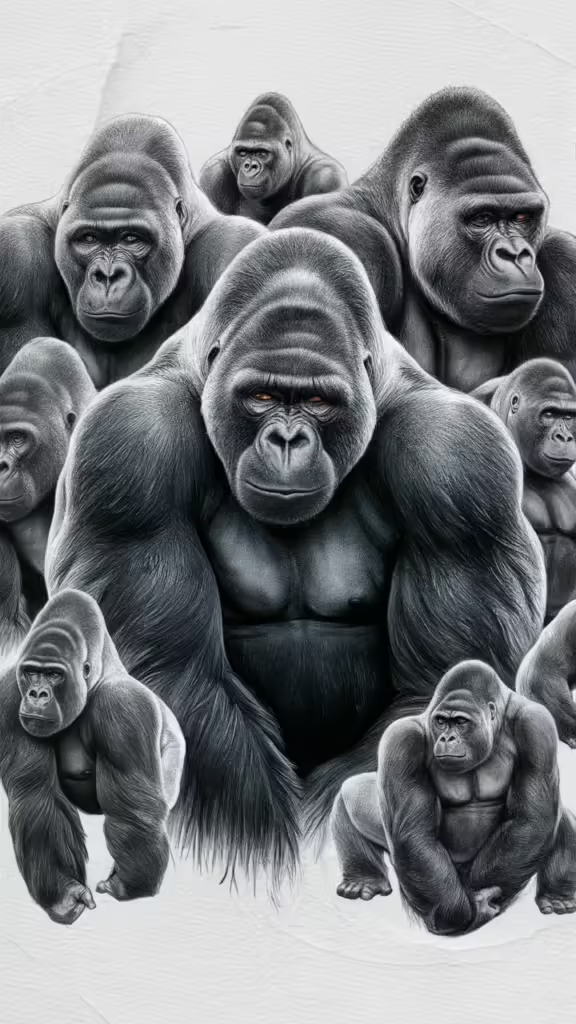
Sketching baby gorillas can highlight the playful and curious nature of these young apes. Their smaller size and softer features provide a contrast to the more imposing adults.
Experimenting with different perspectives, such as a close-up of a gorilla’s face or a wide view of a group, can add variety to a series of sketches. This helps to showcase the gorilla’s different aspects and environments.
